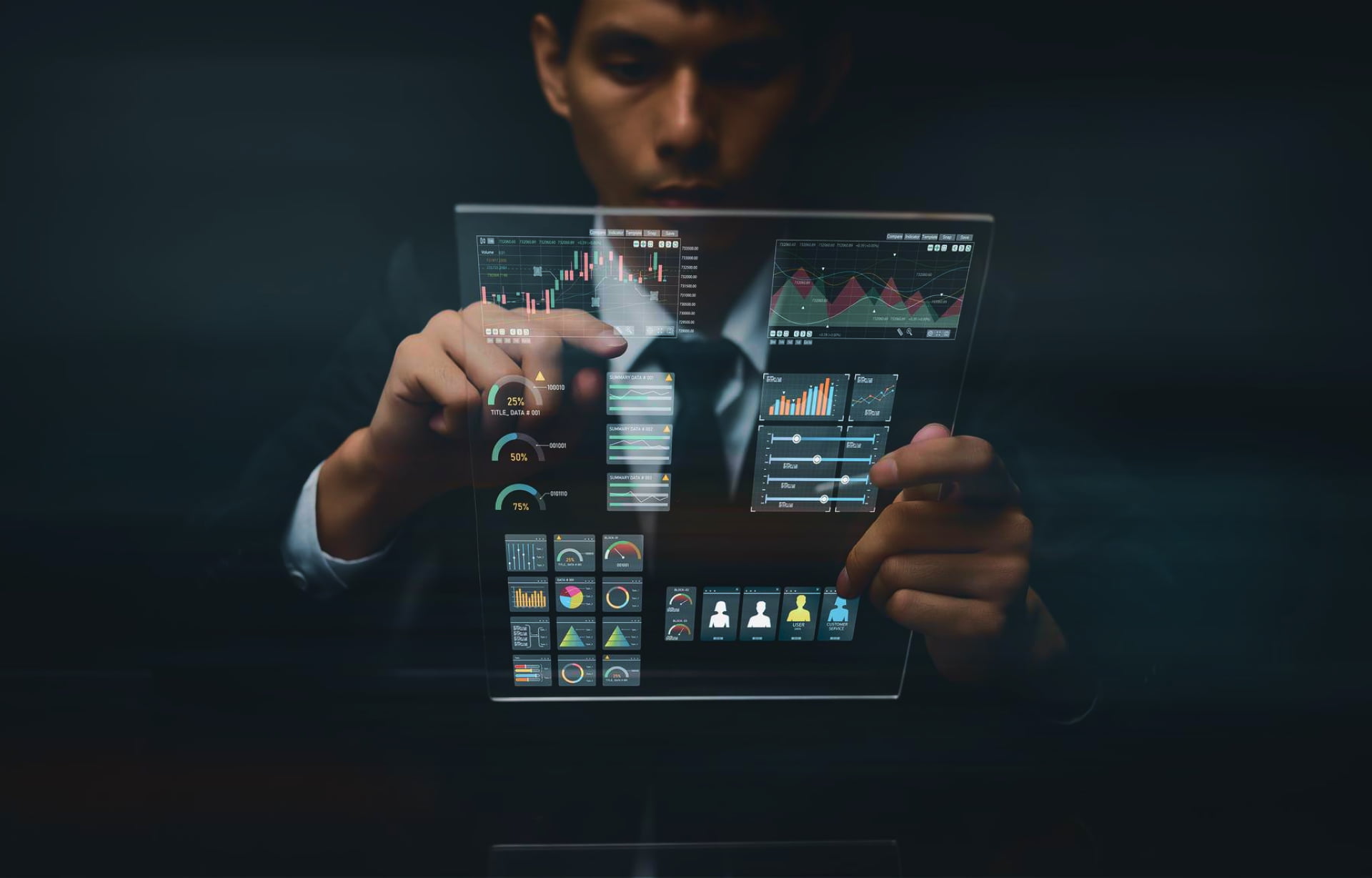Business Intelligence Dashboard Design

Did you know that 59% of CFOs in 2018 said analysis and decision-making are the biggest areas that need technology investment?
In the world of Big Data, the need for business intelligence dashboards is widely understood. Most businesses know that they need a central location to gather and display relevant insights to different users. Well-designed dashboards can take complex data and turn it into useful information, while bad dashboards do just the opposite.
But creating a dashboard that is clear, concise, and easy to understand can be a daunting task. With the application of design principles and best practices, any business can create a business intelligence dashboard that provides an overall view of the health of their business, with an opportunity for user engagement as needed.

Why Design and Context is Important in Designing a Business Intelligence Dashboard
The design and context of a business intelligence dashboard are crucial for increasing user engagement and understanding. The purpose of a dashboard is twofold; the first is to highlight the most important data, and the second is to provide context for that data. Data alone is difficult to interpret.
By providing context, the data tells a story and starts to make sense to the user — they can find meaning, see opportunities for growth, and identify any potential challenges or obstacles in their business. The design and context together give the user an at-a-glance idea of where things are and where they’re headed.
What To Include in a Business Intelligence Dashboard
Different businesses and industries will require different information displayed on their analytics dashboard. However, some general data sets apply to every business. This data includes the overall budget (year-to-date spending, revenue, and profits), as well as marketing efforts (campaign cost and ROI) and project management (planned vs. completed work).
To determine what you should include in a specific dashboard, identify the current opportunities and obstacles facing your business, design a rough prototype, and refine with user research. Consider searching for visual examples within your industry.

Best Practices for Business Intelligence Dashboard Design
- Simplify and Summarize Content
Because business intelligence dashboard design is only for providing a high-level look at business operations, you don’t need to include details of every project. Instead, simplify and summarize the key takeaways from various data sets so users can scan the dashboard quickly and get an idea of what’s going on in the business.
- Prioritize Your Insights
There will always be more data available than space to display it. Prioritize your information so that the dashboard contains only the information that is most relevant to your user. Limit yourself to the top five or ten KPIs (key performance indicators) for your business.
- Organize Information Visually
For a user to engage successfully with a business intelligence dashboard, they must be able to find answers to their questions within five to seven seconds of scanning a page. The better organized the data, the more likely users will be able to find answers quickly. It’s essential to adjust the size of different elements to show which parts of the dashboard are most important.
- Consider Device Size
Many business executives are accessing their real-time dashboards on a desktop computer while they are in the office and on their mobile phones while on the go. Because of the limited size of handheld devices, it’s important to pare down the information included on your dashboard so that only the most vital insights are displayed. Consider creating a specific mobile version of your dashboard to ensure that your data is optimized to display at a smaller size.
- Allow for Customization
Different users will have different needs in accessing the business intelligence professional dashboard. Rather than displaying all the information at once, consider including a filter at the top of the dashboard for users to select what data sets they want to view.
- Allow for More Exploration
The primary purpose of the business intelligence dashboard is to provide users with a high-level view of the business. But many users will want to focus on a particular piece of information, and the dashboard system design should allow them to click, tap, or swipe to reveal more details.
- Use Icons to Increase Understanding
Most users see and understand graphics faster than the written word. Using simple iconography can help them interpret the data more quickly and with less effort. For example, use a dollar sign to represent spending, and a computer or laptop to show website traffic.
- Choose the Right Type of Data Visualization
Different types of data are best explained through different types of visualizations. It’s important to select the right kind of data visualization so that the user doesn’t misinterpret the data. To show trends over time, consider a line graph. For comparing two products, consider a table. The right data visualization will help the user draw the right conclusion from the data.
- Use Color Effectively
Color should be used to enhance a data set, not distract or detract from it. Use business brand colors if needed, but also consider using generic colors to provide relevant meaning. For example, clients acquired could be shown in green to indicate positive results, while clients lost could be shown in red to indicate a negative result.

Conclusion
Avoid Over-Designing
When creating a dashboard, it can be tempting to overwhelm the page with lots of different colors, fonts, and graphics. However, a clean and simple design with limited pops of color and simple data visualizations is all you need to inform and inspire your user.
Ordering business intelligence dashboard design services is an effective way to provide business executives with the vital data driving their business. A thoughtfully-designed dashboard, based on design principles and best practices will bring context to that data, tell a story, and help the user find meaning and draw conclusions.
For modern businesses, there is no greater value than a business intelligence leadership dashboard that makes analysis and decision-making easy, and consequently gives the decision-maker a new level of confidence—something we all could use a little more of in our daily work and personal lives.

Let us help you create interactive dashboards that are a pleasure to use.
Everyone wants to make better use of their data and create surefire systems for smart decision making. The custom dashboard is the ultimate tool for businesses looking to improve their numbers from last year or just better understand their struggles.